Funny how? Where women and stand-up meet for laughs
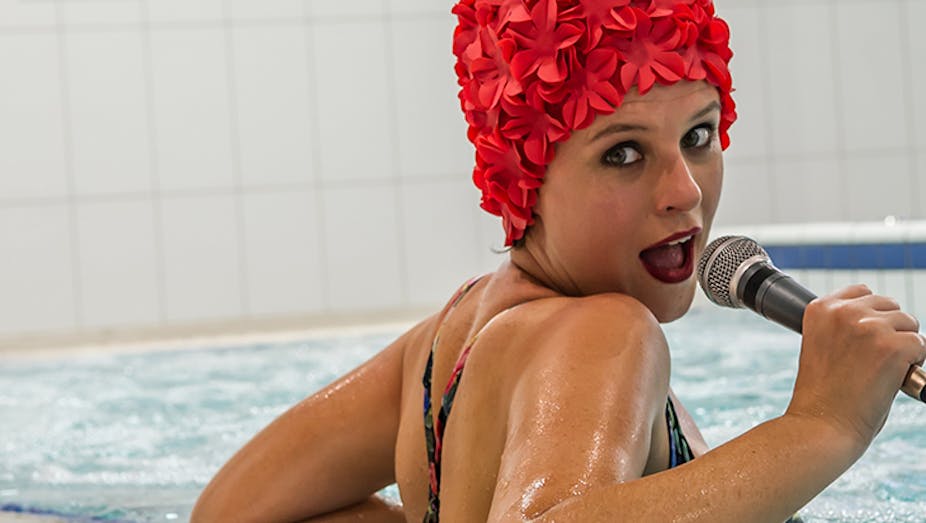
What is it about stand-up comedy that makes it a more difficult space for a funny woman to conquer?
A bunch of seasoned female stand-ups return to the Melbourne International Comedy Festival (MICF) this year, which runs until April 20, including Fiona O’Loughlin, Hannah Gadsby, Celia Pacquola, and Denise Scott. There are Australia’s “rising stars” too, such as Anne Edmonds, Stella Young, Mel Buttle, Kate McLennan and Kirsty Mac.
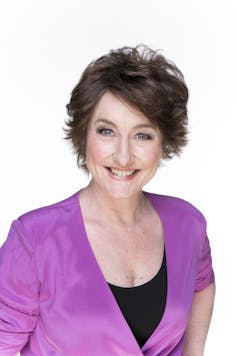
They will join a strong legacy of Australian women comics – Noelene Brown, Denise Drysdale, Wendy Harmer, Jean Kittson, Maryanne Fahey, Lynda Gibson, Magda Szubanski, Jane Turner and Gina Riley, to name a few. But despite these distinguished alumni, stand-up comedy in particular has been a long-contested performance site for female performers.
For many of these successful women comedians, the genesis and mainstay of their performing careers was in sketch and character comedy. My own performance history began in a similar fashion with work in sketch comedy groups in the 1990s, experimenting with stand-up. A key motivation for testing the genre in this manner is the reception new female comics can receive in a comedy club. Often women walk on stage to cat-calls and gender-based comments that aren’t necessarily faced by their male counterparts.
The act of standing on a stage alone, in charge of a microphone and having the power to direct what occurs in the room, is not something easily given over to just anybody in our culture. It takes a particular personality type to have the courage to step out into the spotlight and take charge of an audience.
Not only must that person have the right personality type but, by definition, they must be “funny” – a loose social construct and highly dependent on the listeners’ perspectives and interpretations of what they are seeing and hearing.
What women bring to stand-up
The nature of a stand-up performance requires a strategy different from that of acting or putting on a character. Stand-up draws on the intensely personal comic persona of the performer – each persona is closely aligned but not precisely the same as the performer’s actual personality.
During the performance, elements of that self are heightened and made more pronounced. You may recognise this phenomenon if you’ve ever met one of your comedy idols and they weren’t as funny in real life, or at least not in the same way they were when you saw them on stage.
Male performers can draw on Australia’s long cultural and social history of the male larrikin telling jokes in a social environment. There is an easy socio-cultural space for any man to be “a good bloke” and take charge of amusing the crowd.
From historical studies, an argument can be made that in Australia, this is the genesis of the modern stand-up performer rather than the British music-hall tradition.
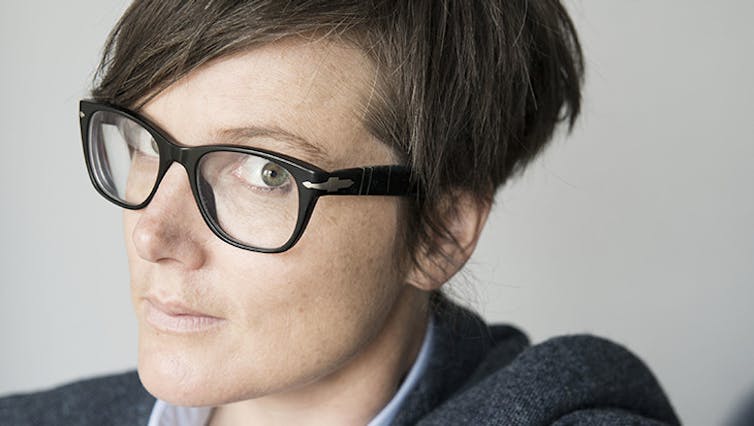
Stand-up has certainly been adopted as a performance style by many emerging male comedians in Anglo-Saxon cultures. Even with the trend to “metro-sexualised” male performance (a non-traditional, 21st century version of maleness), the element of manliness inherent in “owning” the stage serves to retain the gendered nature of the performance space.
For women, it works quite differently. There is no socio-cultural space for women to play the larrikin and then translate that to stage performance in the same way. The reasons for this are complex, but one way to understand it is to see gender itself as a performance – the very act of performing femininity in everyday life precludes the opportunity to behave as a masculinised larrikin.
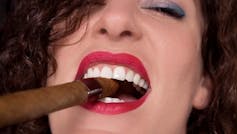
In the visually obsessed online culture of the 21st century, young women are to my mind in a more challenging position than before. In cultures where the female body is more clearly an object for visual consumption, and a sexualised object at that, there is even less space for a woman to perform stand-up comedy.
Sex and laughter do not in fact easily co-exist. While audiences are primed first to see women as objects of desire and to listen to their voices second, desire/ admiration can override the laughter.
Of course women can occupy the stand-up performance space, but there are delicate negotiations that need to take place between the performer and the audience in order for that occupation to succeed.
Women are watched for aggression, for anger and for overtly challenging social norms in a way that is not authentic to their performed female selves. This creates an inherent limitation on female performance that is dependent on any particular audience’s collective world view.
That makes challenging social mores via humour more difficult for women – but perhaps also more important. When it succeeds it carries important messages both overtly and subliminally to both genders about women’s perspectives and their significance.
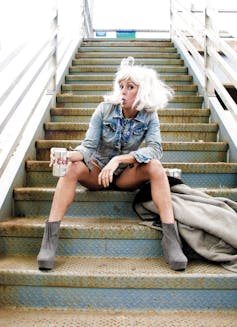
The women’s comedy forum Jeez Louise is running again at this year’s MICF, providing a space for female comedians to discuss the challenges of being a woman in this art form. This year American performance artist Adrienne Truscott(of Asking for It: A One-Lady Rape About Comedy Starring Her Pussy and Little Else! notoreity) is on the panel discussing “the potential and prejudice, frustrations and friendships that define the professional world of female comics”.
The success and recurrence of Jeez Louise says much about how the limits on the social progress female comedians have been able to make over the last 15 or more years.
Women are certainly represented as part of the collective comic voice of Australia and there are many (such as those mentioned earlier) who have transgressed cultural boundaries to allow their genuinely funny take on the world to reach us.
But there is a long way to go before we see equality on the stand-up stage.
The Melbourne International Comedy Festival runs until April 20.
Further reading:
Sex, rape and role models – how women in comedy perform
Sex, rape and role models – how women in comedy perform


No comments:
Post a Comment